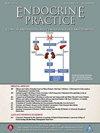Sunscreen and 25-Hydroxyvitamin D Levels: Friends or Foes? A Systematic Review and Meta-Analysis
IF 3.7
3区 医学
Q2 ENDOCRINOLOGY & METABOLISM
引用次数: 0
Abstract
Objective
To evaluate the impact of sunscreen use on 25-hydroxyvitamin D (25(OH)D) levels, addressing conflicting findings from observational and interventional studies.
Methods
Potentially eligible studies were identified from the PubMed/MEDLINE, Scopus, and Web of Science databases from inception to November 2024, utilizing a search strategy incorporating terms related to “sunscreen” and “vitamin D.” The studies eligible addressed the questions define based on the Population, Intervention, Comparator, Outcome framework: What are 25(OH)D levels in patients exposing to sun applying or not sunscreen? This review followed Preferred Reported Items for Systematic Reviews and Meta-Analyses (PRISMA) guidelines. The quality assessment and the risk of bias were analyzed using Quality Assessment of Diagnostic Accuracy Studies version 2.
Results
We included 22 studies in the qualitative synthesis, and 7 in the quantitative one, encompassing a total of 9470 participants. In vitro studies consistently showed that sunscreen blocks UV-B radiation, crucial for vitamin D3 production, while population-based studies reported mixed findings. Some studies linked sunscreen use to lower 25(OH)D levels, particularly in individuals with limited sun exposure, while others observed no significant impact. Meta-analysis showed that the adoption of sunscreen is associated to a reduction of 25(OH)D serum concentration (standardized mean difference = −2 ng/mL, 95% confidence interval −3, −1) with a not important heterogeneity across studies (I-square = 37%, P = .15).
Conclusion
The existing evidence supports that sunscreen can impair vitamin D3 synthesis, and as a result decrease serum 25(OH)D levels, but further research is necessary to determine the broader health implications and guide public health recommendations.
防晒霜和25-羟基维生素D水平:是友是敌?系统回顾和荟萃分析。
目的:评估防晒霜使用对25-羟基维生素D (25(OH)D)水平的影响,解决观察性研究和介入性研究中相互矛盾的发现。方法:利用包含“防晒霜”和“维生素d”相关术语的搜索策略,从PubMed/MEDLINE、Scopus和Web of Science数据库中识别出潜在的符合条件的研究,时间从开始到2024年11月。符合条件的研究解决了基于人口、干预、比较器、结果框架定义的问题:暴露于阳光下的患者涂抹或不涂抹防晒霜时25(OH)D水平是多少?本综述遵循系统评价和荟萃分析首选报告项目(PRISMA)指南。使用《诊断准确性研究质量评估》第2版对质量评估和偏倚风险进行分析。结果:定性综合纳入22项研究,定量综合纳入7项研究,共纳入9470名受试者。体外研究一致表明,防晒霜可以阻挡对维生素D3产生至关重要的UV-B辐射,而基于人群的研究报告了不同的结果。一些研究表明,使用防晒霜可以降低25(OH)D水平,尤其是在日照有限的人群中,而另一些研究则没有发现明显的影响。荟萃分析显示,防晒霜的使用与25(OH)D血清浓度的降低有关(标准化平均差= -2 ng/mL, 95%置信区间-3,-1),各研究之间的异质性不重要(i方= 37%,P = 0.15)。结论:现有证据支持防晒霜会损害维生素D3合成,从而降低血清25(OH)D水平,但需要进一步研究以确定更广泛的健康影响并指导公共卫生建议。
本文章由计算机程序翻译,如有差异,请以英文原文为准。
求助全文
约1分钟内获得全文
求助全文
来源期刊

Endocrine Practice
ENDOCRINOLOGY & METABOLISM-
CiteScore
7.60
自引率
2.40%
发文量
546
审稿时长
41 days
期刊介绍:
Endocrine Practice (ISSN: 1530-891X), a peer-reviewed journal published twelve times a year, is the official journal of the American Association of Clinical Endocrinologists (AACE). The primary mission of Endocrine Practice is to enhance the health care of patients with endocrine diseases through continuing education of practicing endocrinologists.
 求助内容:
求助内容: 应助结果提醒方式:
应助结果提醒方式:


